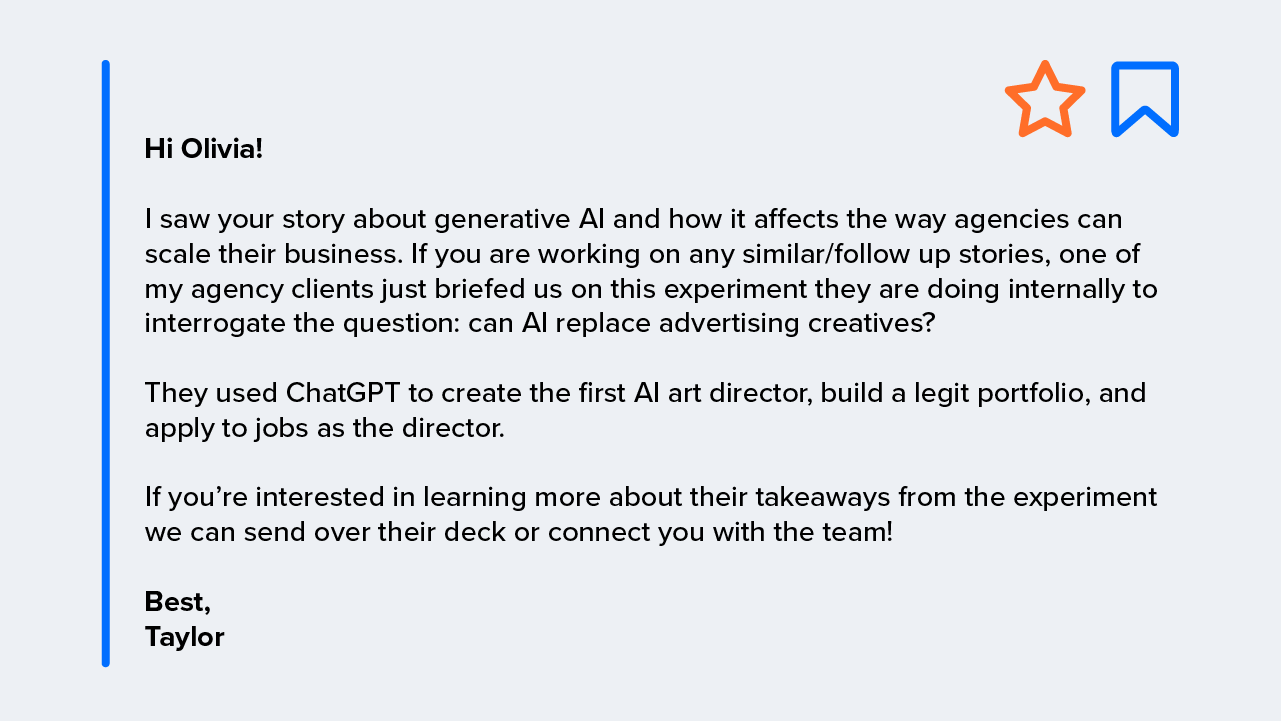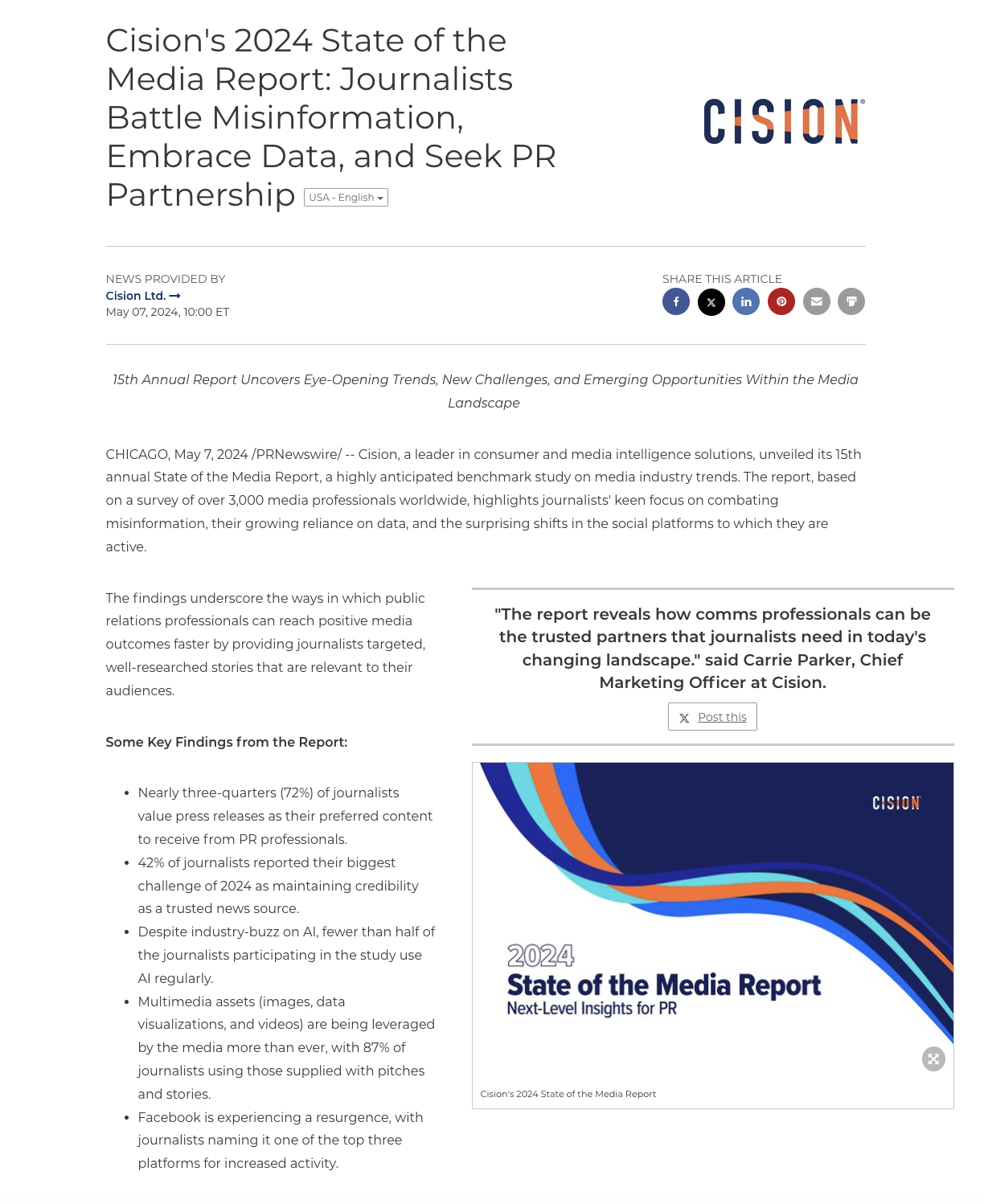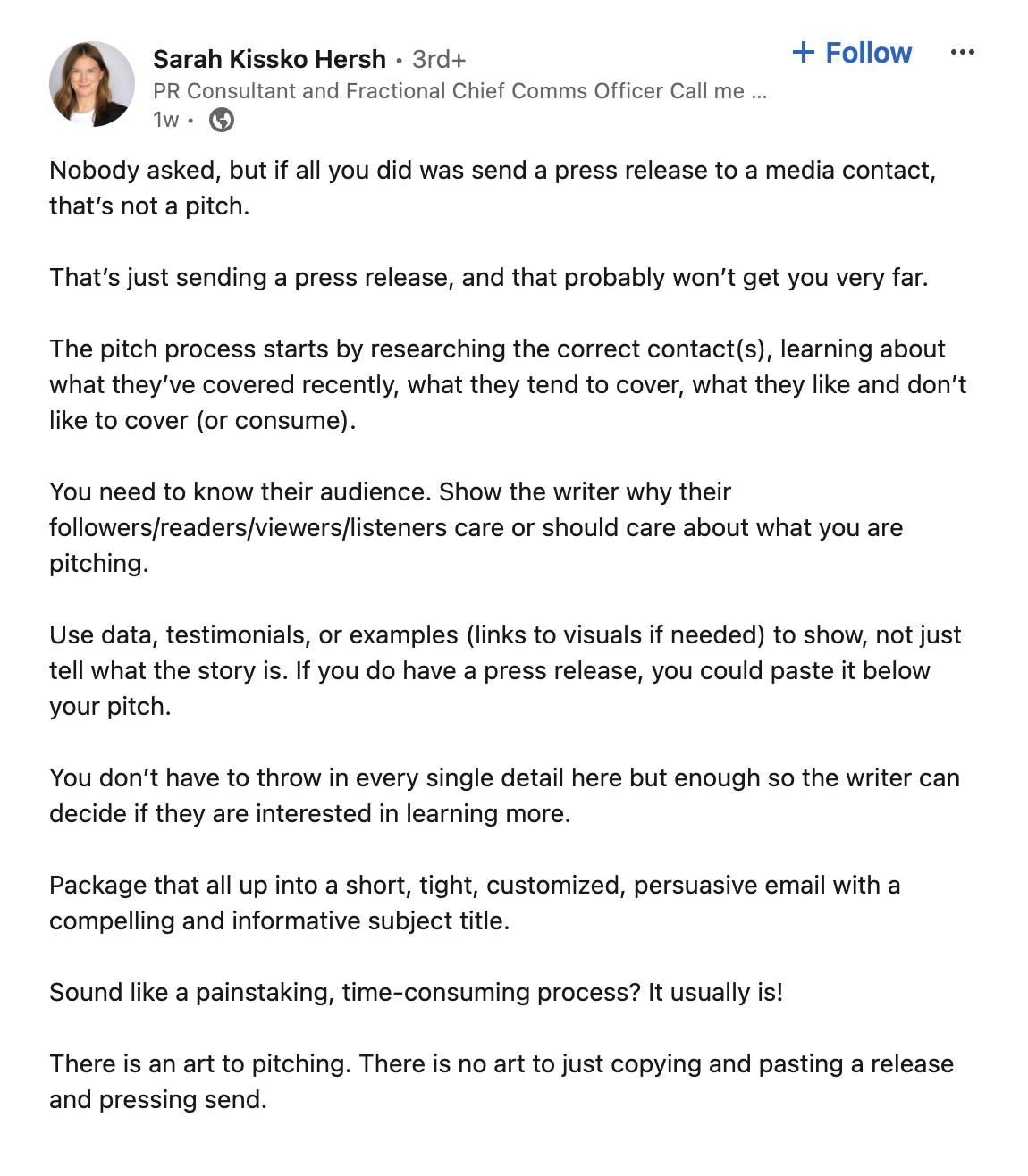In media relations, pitching stories and sending press releases are two essential aspects of the job. But while the two are often used together, there are important distinctions between them.
In this article, we break down the nuances of pitching and press releases to help you maximize the impact of your efforts.
What is a Media Pitch?
Let’s start by defining the terminology, and then we can dig into the details of pitching.
A media pitch (also known as a PR pitch, press pitch, or story pitch) is a brief proposal that public relations professionals send to journalists, media outlets, and influencers to generate interest in a particular story idea.
For journalists, getting enough story ideas isn’t a problem – they are inundated with over 50 pitches a week on average. The most important factor for a pitch, and one that is often lacking, is relevance to the journalist and their audience. Meticulous research on the part of PR teams is crucial to understand each media contact’s coverage area, topics/beat, preferences, past work, and audience interests. This ensures you can personalize and tailor your pitch appropriately.
Why Send a Pitch
There are plenty of reasons to pitch, like:
- Proposing unique stories about new products, events, or initiatives
- Offering interview opportunities with your organization’s experts/thought leaders
- Providing original research or data related to trending topics
- Submitting bylined articles from an industry expert at your company
Beyond potentially earning coverage for your brand, good pitching is a way to kick off strong, long-lasting relationships with journalists. In our 2024 State of the Media survey, 68% of journalists said PR pros who take time to understand their audience make their jobs easier. (Subtext: the easier you make it for journalists to do their jobs, the more they’ll want to work with you.)
When to Pitch
Pitching is ideal when you have stories that:
- Tie into breaking news and trends
- Position your brand as a thought leader
- Add new angles to a journalist’s previous coverage
- Offer exclusives or embargoed news
Formatting a Pitch
Today, most pitches are emailed – which 9 in 10 journalists strongly prefer (according to the above-mentioned State of the Media Report).
Although there isn’t a standard template, a solid PR pitch usually includes:
- An attention-grabbing subject line
- A friendly, professional greeting
- Who, what, when, where, and why details (two to three paragraphs max)
- A link to related multimedia assets (photos, videos, logos, etc.)
- Clear contact info for follow-ups
Here's an example of a successful pitch my colleague recently wrote about in How To Write A Media Pitch + 5 Pitch Examples That Actually Got Published:

What is a Press Release?
While pitching targets individual journalists and is more conversational, a press release is an official statement broadcasting major announcements to a wide audience. Press releases are used to share news like product launches, acquisitions, executive hires, events, and other significant milestones.
Press releases have been around almost as long as public relations has existed, yet they remain an industry mainstay: 68% of journalists explicitly rely on press releases for content ideas, according to the State of the Media Report.
Why Issue a Press Release
Press releases offer numerous benefits, such as:
- Simultaneously sharing news with media, stakeholders, and the public
- Easily repurposing info into other content (blogs, social, video scripts, paid ads, etc.)
- Providing a comprehensive source of truth to reference across PR efforts
- Driving website traffic through embedded links.
When to Issue a Press Release
Press releases work best for:
- Sharing major announcements publicly
- Publishing mandatory disclosures in regulated industries (finance, pharma, etc.)
For inspiration on your next press release, take a look at 40 Newsworthy Reasons to Write a Press Release + 7 Ways to Get Eyes On It.
Formatting a Press Release
Press releases can be distributed through any number of channels – including newswire services, company newsrooms, social media, newsletters, dedicated emails to a media list, or even through a media relationship management platform.
The standard format includes:
- Headline
- Introduction
- Body text
- Company boilerplate
- Contact info
For example, here is Cision’s recent press release announcing the 2024 State of the Media Report (distributed through PR Newswire).

Note: When talking about press releases, you may hear the terms “news release” or “media release.” The format and intent of a press release, news release, or media release are very similar. Other terms to be aware of are “media advisory” or “media alert.” Unlike press releases, these are short updates sent to media outlets to inform them of an upcoming event, and typically include just the basic event details, contact info, and a brief description to entice journalists to attend.
Combining Pitching and Press Release Distribution
For high-impact PR initiatives, combining both pitching and press release distribution helps you make the most of your messaging and can streamline your workload.
To start, issue the press release as the official source of truth with all key details and multimedia assets. It's the comprehensive background that media can quickly reference and pull from, and you can link to it in related PR and marketing efforts.
Then, develop pitches that act as teasers for your news. Highlight the most interesting data points, quotes, and story angles in your targeted pitches that are personalized to each journalist. Including a link to the press release helps you keep it short and sweet.
And as mentioned above, you can partner with colleagues to repurpose the approved release content into other formats such as blogs, social posts, and paid ads tailored for each audience and channel to amplify your message.
PR industry thought leader Sarah Kissko Hersh speaks to the value of an integrated approach in her recent LinkedIn post:

Tips for Effective Pitching and Press Releases
Although pitching and press release distribution are completely different activities, there are several tips that apply to both:
- Create attention-grabbing subject lines/headlines
- Incorporate relevant data and quotes
- Tell a compelling brand story
- Use multimedia assets such as photos, logos, videos, and infographics
- Align your messaging across channels (website, social, sales, etc.)
For greater online visibility, be sure to optimize your press releases for SEO with relevant keywords and alt text for graphics.
Here are a few resources for additional tips and insights:
- 5 Ways to Woo Journalists and Build Better Media Relationships
- 7 Types of PR Pitches (And How to Nail Each One)
- Mastering the Pitch: Data-Backed Strategies for Smarter PR
- 3 Must-Have Elements for Your Next Press Release
- State of the Media Report
- Understanding Today's Media: Industry Insights from Top Journalists
Measuring PR Success: Metrics to Track
In today’s environment of data-driven decision making, reporting on pitches sent and releases issued isn't enough. To demonstrate the true impact of your PR efforts, you need comprehensive metrics that analyze what's actually moving the needle, like:
Pitching Metrics to Track:
- Open and response rates from targeted journalists
- Earned media placements
- Total potential reach and audience of placements
Press Release Metrics to Track:
- Total release pick-ups and coverage views
- Website traffic increases from release (views, click throughs, sign-ups, downloads, etc.)
- Social media engagement (shares, impressions, etc.)
A comprehensive PR and comms platform like CisionOne can not only help you find the right media partners to tell your story, but it also tracks robust PR metrics that demonstrate the true value of your work.
Take a deeper dive into the PR metrics that matter with our tip sheet, 7 Essential PR Metrics to Prove Impact.
CisionOne also gives you real-time, customized reporting that helps tie your media relations performance to broader organizational KPIs. It’s imperative to show how achievements like earned placements, executive thought leadership, and consistent brand storytelling contribute to real business impact.

Bottom Line
In our world of consumer skepticism and misinformation, earned media coverage is increasingly vital for brands to build their credibility and reputation. By strategically leveraging pitching and press release distribution, PR professionals can expand their brand storytelling across channels.
See what an advanced, all-in-one PR and comms platform can do for your brand. Take a tour of CisionOne or schedule time to speak with an expert.








